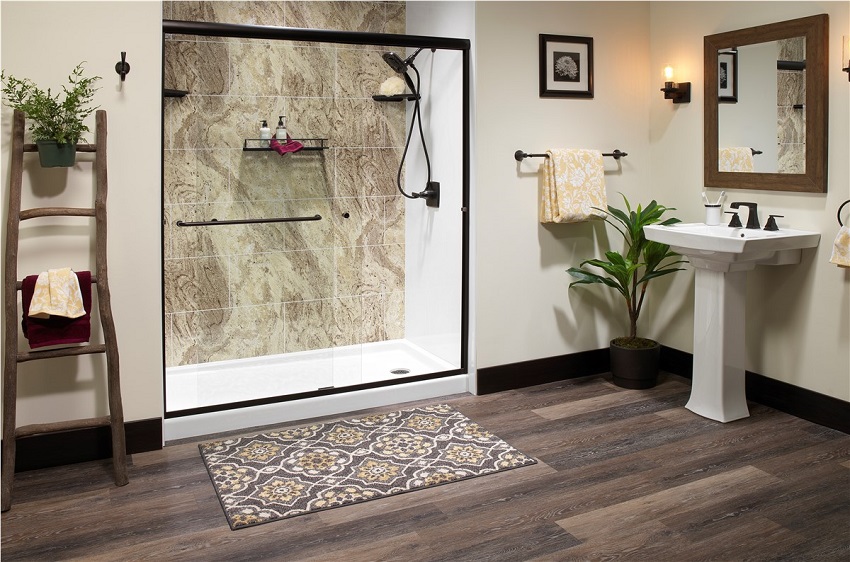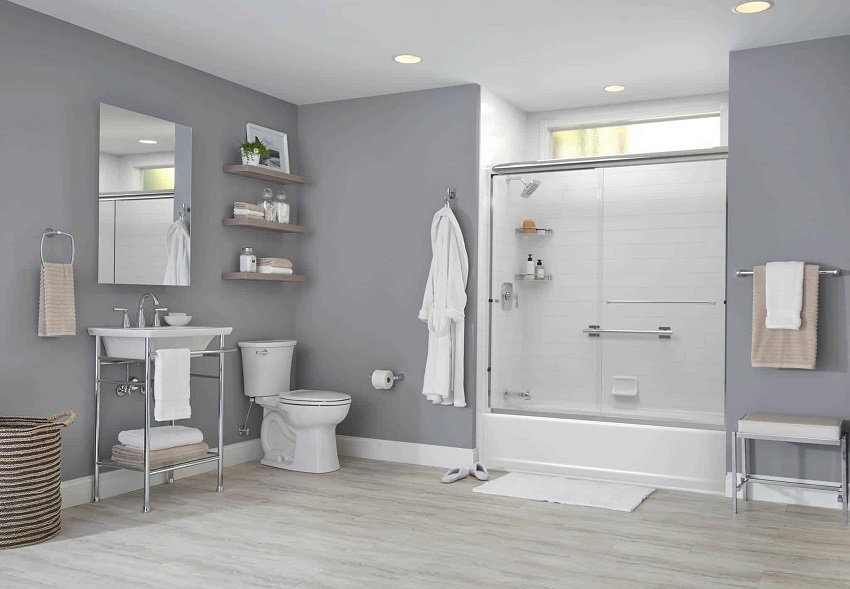Are you tired of that old bathtub that takes up so much space in your bathroom? Have you been considering the idea of replacing it with a sleek and modern shower? You’re not alone. Many homeowners are opting for the convenience and style of showers over traditional baths. But is it easy to replace a bath with a shower? In this article, we’ll take you through everything you need to know about this transformation, step by step. This article is presented by Marypwaters.com.
1. Assessing Your Bathroom Space
The first step in the process is to assess your bathroom space. Measure the area occupied by the bathtub and determine if it’s suitable for a shower. Consider factors like plumbing connections, ventilation, and the overall layout of your bathroom.
2. Planning the Layout
Once you’ve determined that your bathroom can accommodate a shower, it’s time to plan the layout. Decide where the shower tray will be placed and whether you want a walk-in shower or a shower with glass enclosures. This is also the stage where you’ll need to consider any additional features, such as built-in shelving or seating.
3. Checking Plumbing and Drainage
Converting a bath into a shower requires adjustments to the plumbing and drainage systems. You might need to relocate or modify existing pipes and drains to fit the new shower layout. It’s recommended to hire a professional plumber to ensure that all connections are properly installed and leak-free.
4. Removing the Bathtub
Removing the old bathtub can be a labor-intensive task. You’ll need to disconnect and cap off the water supply, remove tiles or surrounding materials, and carefully dismantle the bathtub. This step requires both tools and some DIY skills or the help of a contractor.
5. Preparing the Walls and Floor
With the bathtub removed, it’s time to prepare the walls and floor for the new shower. This might involve repairing or replacing drywall, retiling surfaces, and installing a waterproof barrier to prevent moisture from seeping into the walls. Discover What is the Advantage of Mosaic Tiles?
6. Installing the Shower Base
The shower base is the foundation of your new shower. It’s essential to install it correctly to ensure proper drainage and stability. Follow the manufacturer’s instructions carefully or consult a professional to avoid any issues down the line.
7. Assembling the Shower Enclosure
If you’re opting for a shower enclosure, this is when you’ll put it together. Attach the glass panels or walls according to the instructions. Make sure all edges are sealed properly to prevent water leaks.
8. Connecting Fixtures and Plumbing
Connect the shower fixtures, including the showerhead, faucets, and controls. Ensure that the plumbing connections are secure and that there are no leaks. Testing the water flow and temperature at this stage is crucial.
9. Adding the Finishing Touches
Now comes the fun part – adding the finishing touches. Install shelves, soap dispensers, and any other accessories you want in your shower area. This is where you can get creative and make your shower space not only functional but also stylish.
10. Proper Ventilation
Good ventilation is essential in a bathroom, especially with a shower. Consider installing an exhaust fan to prevent mold and mildew growth. Adequate ventilation also helps to keep the space fresh and comfortable.
11. Sealing and Waterproofing
Before you start using your new shower, it’s important to seal and waterproof all joints and seams. This step ensures that your bathroom stays watertight, preventing potential water damage in the long run.
12. The Joy of Showering
Congratulations! You’ve successfully replaced your bath with a shower. Enjoy the convenience, efficiency, and modern aesthetics that a shower brings to your bathroom.
Conclusion
In conclusion, replacing a bath with a shower is indeed possible, but it involves several steps that require careful planning, precise execution, and sometimes the assistance of professionals. From assessing your space to enjoying the final results, the journey can be both rewarding and transformational.
FAQs
Q1: How long does it take to replace a bath with a shower?
The timeline can vary depending on the complexity of the project, but it generally takes around 1 to 2 weeks.
Q2: Can I DIY the conversion, or should I hire a professional?
While some DIY enthusiasts might tackle this project, it’s recommended to hire professionals, especially for plumbing and structural adjustments.
Q3: Will I lose value in my home by removing a bathtub?
While some potential homebuyers might prefer a bathtub, many modern homeowners prioritize showers. It’s essential to consider your target market and the overall bathroom layout.
Q4: Are there any maintenance differences between a bath and a shower?
Showers might require more frequent cleaning to prevent soap scum and mineral buildup, but they are generally easier to maintain than bathtubs.
Q5: Can I convert a shower back into a bath if needed?
Yes, with the right planning and adjustments, it’s possible to convert a shower back into a bath if you ever decide to do so.

